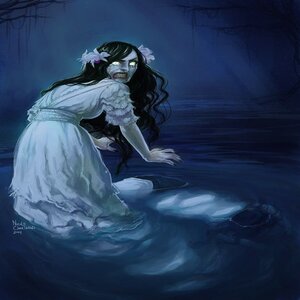
La Llorona
CBUB Wins: 1
CBUB Losses: 0
CBUB Ties: 0
Win Percentage: 100.00%
Added by: Mercenaryblade
Read more about La Llorona at: Wikipedia
Official Site: Public Domain
La Llorona ( ; "The Weeping Woman" or "The Wailer") is a Mexican mythical vengeful ghost who is said to roam near bodies of water mourning her children whom she drowned.
Early colonial times provided evidence that the lore is pre-Hispanic, originating in the central highlands. However, La Llorona is most commonly associated with the colonial era and the dynamic between Spanish conquistador and indigenous women. The most common lore about La Llorona includes her initially being an Indigenous woman who murdered her own children, which she bore from a wealthy Spaniard, after he abandoned her. The villainous qualities of La Llorona, including infanticide and the murdering of one's own blood is assumed to be connected to the narrative surrounding Doña Marina, also known as La Malinche, or Maltinzin in her original nomenclature. Today, the lore of La Llorona is well known in Mexico and the Southwestern United States.
The earliest documentation of La Llorona is traced back to 1550 in Mexico City. But there are theories about her story being connected to specific Aztec mythological creation stories. "The Hungry Woman" includes a wailing woman constantly crying for food, which has been compared to La Llorona's signature nocturnal wailing for her children. The motherly nature of La Llorona's tragedy has been compared to Chihuacoatl, an Aztec goddess deity of motherhood. Her seeking of children to keep for herself is significantly compared to Coatlicue, known as "Our Lady Mother" or Tonantsi (who's also comparable to the Virgen de Guadalupe, another significant mother figure in Mexican-culture), also a monster that devours filth or sin.
The legend of La Llorona is traditionally told throughout Mexico, Central America and northern South America.
CBUB Match Record:
| Result | Opponent | My Score | Their Score | |
|---|---|---|---|---|
| Win | Bloody Mary | 4 | to | 1 |
No Fantasy Draft Records Available
